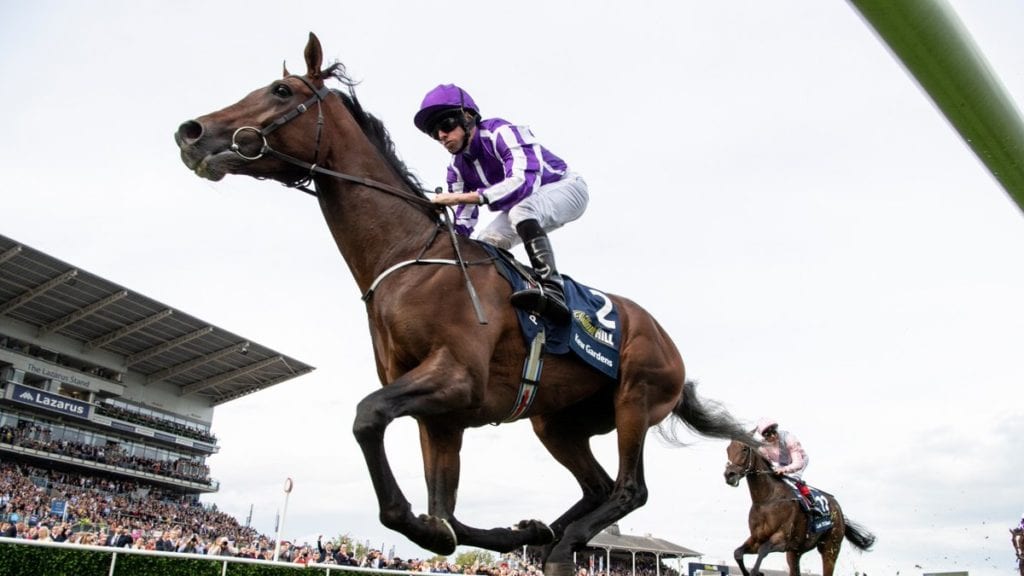The St.Leger is one of the standout events on the British Horse Racing calendar, and is regarded as the World’s Oldest Classic. It concludes a prestigious week of racing, and is often regarded as the race which unofficially marks the end of the summer flat racing season.
It is also the only classic to be held in Yorkshire, with Doncaster Racecourse hosting the Group 1 event. The race is competed over 1 mile 6 furlings and 115 yards, and tends to be held on the second week of September. As well as being the oldest classic in the UK (inaugurated 1776), it’s also the longest, and provides a real test of stamina for the horses involved. However, the race has been shortened over the years, as it originally was held over two miles.
The race has always been held at Doncaster racecourse, except when it was transferred to Newmarket during World War I, briefly changing its name to the September Stakes in the process. During World War II, it was held at a number of different racecourses including Thirsk, York and Manchester. It did not take place in 1939. In 1989, Ayr staged the St.Leger, and it was won by Henry Cecil’s Michelozzo.
The race is open to three-year olds, and tends to attract a significant-sized field. All competitors will carry a weight of 9st 1lb, with fillies getting a 3lb allowance.
The race is the third and final leg of the triple crown, which begins with the 2000 Guineas in early-May. Western Australia was the first horse to complete the triple crown back in 1853.
John Scott remains the most successful trainer in the race, with 16 victories in the contest between 1827 and 1862. He was responsible for the aforementioned Western Australia.
Masked Marvel, who was victorious in 2011 and trained by John Gosden has recorded the quickest-ever time in the race, completing the 1 mile 6furlongs in 3 minutes and 00.44 seconds. Whereas Never Say Die’s victory in 1954 was amongst the most convincing with the American-bred chesnut winning the race by twelve lengths.
As of 2019, Aidan O’Brien has won three of the last six stagings of the race. His most recent winner was Kew Gardens in September 2018. John Gosden saddled winners in 2007, 2010 and 2011, but hasn’t managed to repeat the trick in the last eight years.
When and Where?
The St.Leger is held at Doncaster Racecourse, which is a left-handed track located in South Yorkshire. It is the only classic to be staged in the county. Typically, the race will be held on the second week of September, although this can vary depending on the sporting calendar.
Why is the St.Leger so Popular?
The St.Leger is incredibly popular as it is the final opportunity for flat racing fans to enjoy one of the classics. It’s place on the calendar also adds to the appeal. Many of the big events are held in May, June and July, and there is often a gap between these and the St.Leger getting underway in September. This allows time for ample build up to the event, and whets the appetite of punters.
The race is a real test of stamina, and it’s always an interesting watch to see which competitors are able to last the distance on Town Moor.
Lastly, it also attracts a high-quality field, and the best three-year olds in the country will often compete in this event. The St.Leger is always hugely competitive, and as a result, thoroughly entertaining.
In the UK, the full four days are televised by ITV, which will allow fans to follow all of the action.
What Betting Opportunities are Available?
There are plenty of betting opportunities when it comes to the classics, and the St.Leger is no exception.
There are loads of different markets to explore, and different ways of trying to predict the outcome. It’s a hugely popular event with horse-racing punters, and the entire festival will attract plenty of interest from those who fancy a wager.
Key Betting Markets
Ante-Post Betting – Savvy punters will always aim to be one step ahead, and many of them will take an ante-post price on a horse to win the St.Leger. This is often as a result of seeing a potential contender last 1m 6f with relative ease in one of the many warm-up events. The ante-post markets tend to be available all year round, and most UK bookmakers will shuffle the odds frequently during the build-up.
Outright Winner – Nice and simple. This is simply predicting which horse will win the race. There is usually decent-sized field, and plenty of horses to pick from, making it a very open contest. As a result, big-priced winners are not uncommon in the St.Leger. Your chosen horse must be first to cross the line in order to receive a pay-out.
Each-Way – Each-way betting is very popular with punters who are seeking some value. This allows a degree of flexibility regarding the outcome. Bigger priced runners are usually ideal for this, as the majority of bookmakers will pay-out 1/5 of the odds if your horse runs into a place. Some bookmakers will occasionally pay additional places on the contest, so it’s always best to shop around. If it is a field of 8-12, you will be paid out for the first three places, 12-16 runners will result in the first four home paying out at each-way odds.
Match Bet – Some bookmakers will also offer additional markets such as match betting. This will select two popular competitors (Horse A and Horse B) and ask punters to decide which one of the pair will finish furthest ahead. This is ideal for those who do not wish to commit to a winner of the contest. If you’ve opted for Horse A to beat Horse B, and they come 2nd last and last, it doesn’t matter! As long as your chosen horse has come in front of its rival, you’ll receive your winnings.
Winning Jockey/Trainer – Often, bookies will also price up the possibility of a particular trainer or jockey winning the race. Aidan O’Brien is very popular in these markets having been victorious in the previous two stagings of the event. Leading trainers will often have more than a single entry, and therefore these markets can cover a number of competitors.
Bobby’s Big Betting Tips for the St.Leger
Stamina is Key – I realise that this sounds a pretty obvious statement, but not all horses will be able to last the 1 mile 6furlongs. Just because a horse has been successful over 1 mile 2furlongs, it doesn’t necessarily mean that it’ll enjoy the extra 4 fourlongs. Always check the pedigree of a horse, and study the racing comments as well. If a horse won at 1 mile 3furlongs, but it only just scrambled over the line, it may set off some alarm bells. Always make sure that your chosen horse will step up, or is already proven at the distance.
Check the Going and Forecast Before Placing a Bet – September is a mixed bag when it comes to the weather, and it can often be interchangable. Just because the going was good on the first day of the St.Leger festival, it doesn’t mean that it’ll stay that way for the Saturday. Keep checking the forecast as a sudden downpour could completely change a horses’ fortunes.
Don’t Dismiss the Smaller Operations – It is true that this race has been dominated by some heavy hitters in recent years. John Gosden, Aidan O’Brien and Sir Michael Stoute have all been prominent in the last decade or so, but every now and again, a less high-profile trainer will come up with the goods. Laura Mongan’s Harbour Law won in 2016, whilst Ralph Beckett and Tim Easterby has also won the race since 2000. The larger stables do tend to come to the fore in this event, but the smaller yards should not be completely dismissed out of hand.
ITV1 will be broadcasting the entire St.Leger Festival throughout the four days. They will be showing the St Leger live in the UK in mid-September.







 You get to your mid-fifties and the body doesn’t recover before 7 am! Otto built many internet betting tools for me going back to 2011 that helped me bet on an industrial scale & make BIG money! I must also give him credit for SportsCampionPredictor.com! Otto engineered the website and now it is up to me and my friends to make big betting on sports championships fun for the online sports wagering community!
You get to your mid-fifties and the body doesn’t recover before 7 am! Otto built many internet betting tools for me going back to 2011 that helped me bet on an industrial scale & make BIG money! I must also give him credit for SportsCampionPredictor.com! Otto engineered the website and now it is up to me and my friends to make big betting on sports championships fun for the online sports wagering community! 









